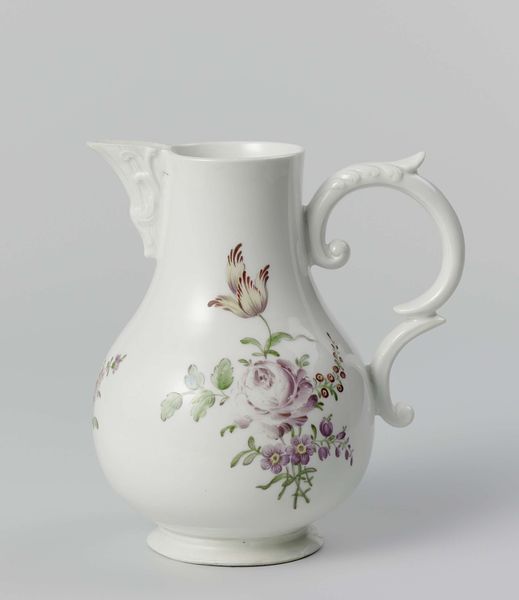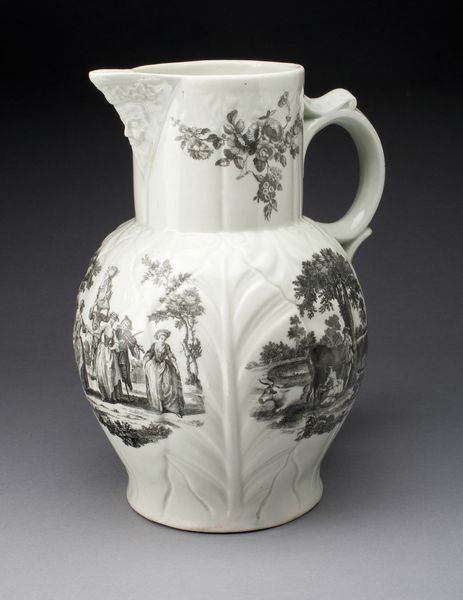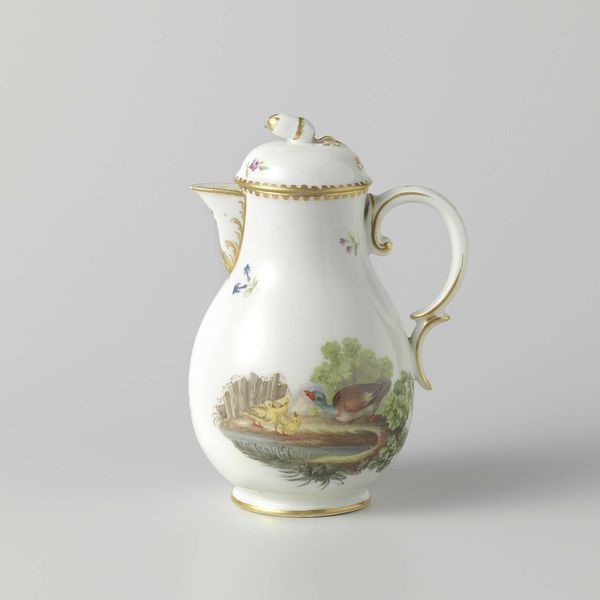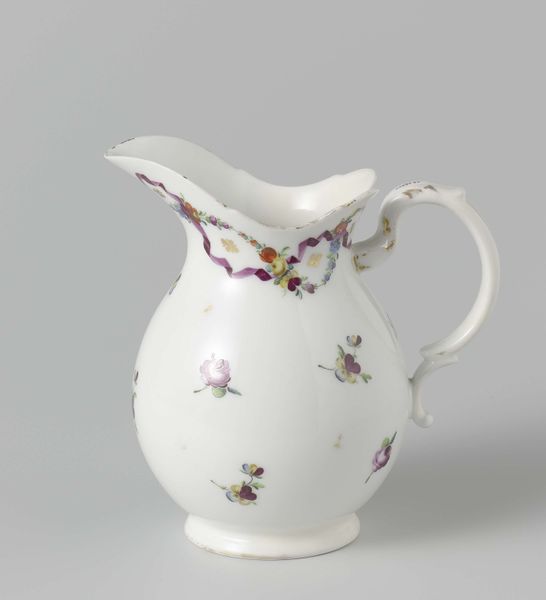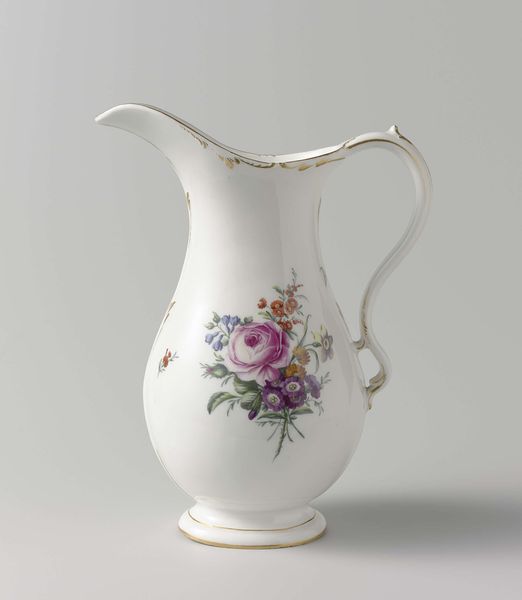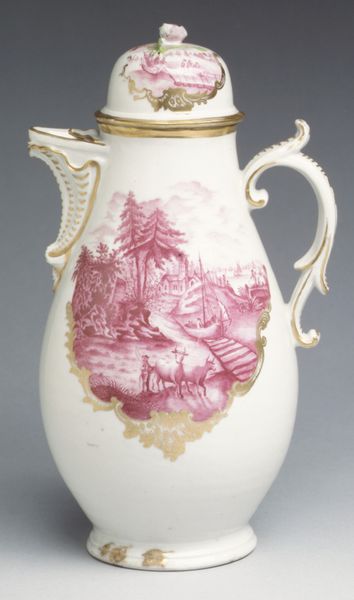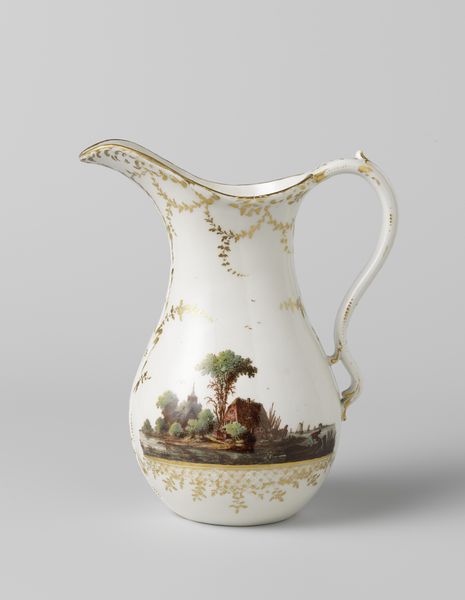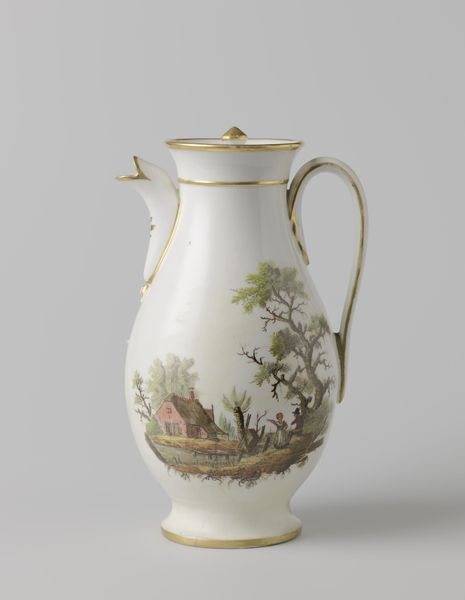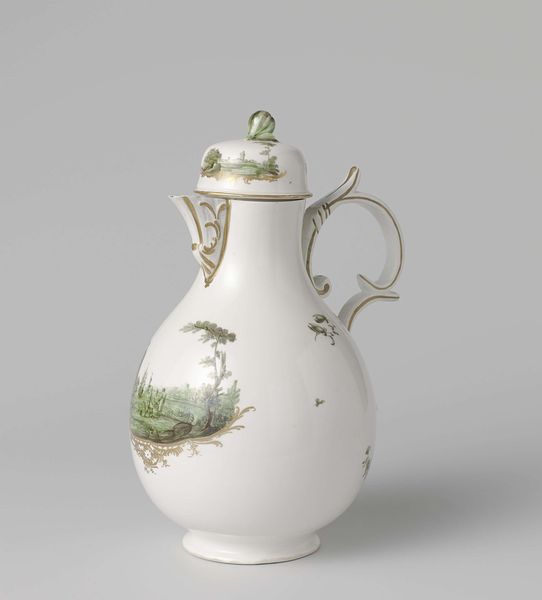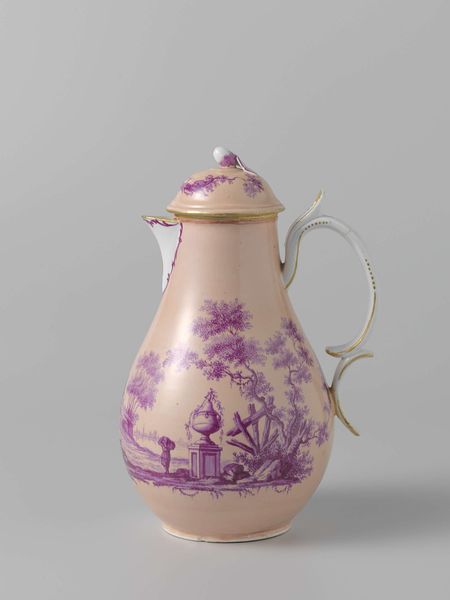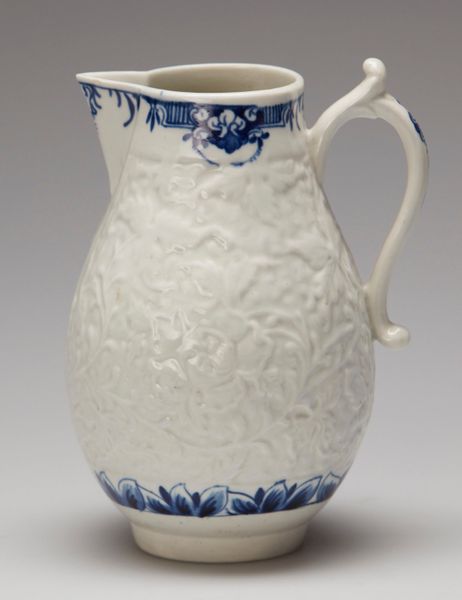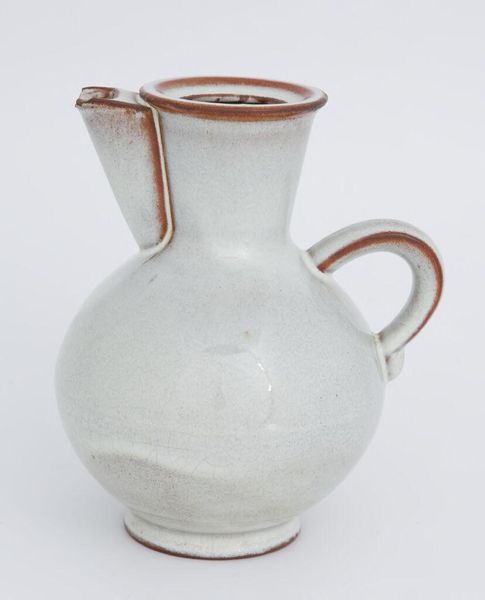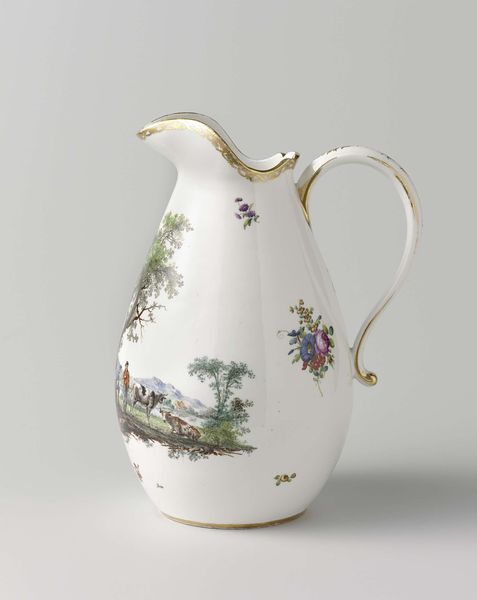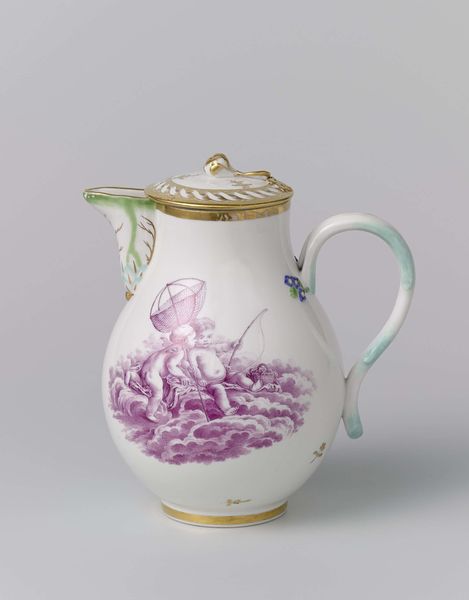
painting, ceramic, porcelain
#
painting
#
landscape
#
ceramic
#
porcelain
#
miniature
#
rococo
Copyright: Rijks Museum: Open Domain
Curator: This is a porcelain milk jug made at the Weesper porseleinfabriek, around 1759 to 1771. Editor: It's absolutely precious. The miniature landscape scene, combined with the overall pearly white finish, makes it feel so delicate and charming. Curator: Exactly. Observe how the Rococo style manifests in the sinuous handle and the asymmetrical painting. The central image is framed by an ornate border that does not impose itself on the viewer. Editor: Yes, the Rococo tendency toward lighthearted themes is on display, but I can’t help wonder who exactly had access to something so clearly expensive, to what extent might its very existence speak to broader societal divides during that time? Curator: The jug's primary function becomes almost secondary. What dominates are formal elements—the perfectly balanced tension between utility and decorativeness; and observe the application of the painted miniature landscape scenes with fine brushstrokes. Editor: Speaking of function, there's a political element, here too. This period saw increased European interest in East Asian goods. As domestic porcelain industries emerged, it signaled a shift away from global dependencies to a burgeoning self-reliance… not everyone, of course, was happy about that! Curator: I see your point, and I appreciate that wider reading of cultural significance, however one cannot ignore the very tactile quality. Porcelain manufacture allowed a manipulation of form and finish—from its flawlessly smooth surface to its almost luminous purity of colour—producing wares that could simulate textures and effects, which would have seemed, at that time, to have been almost magical! Editor: The pursuit of such purity isn't ideologically neutral though. To remove color in this manner often translates, historically, to the erasure of difference… In that light, can porcelain production become, inadvertently or otherwise, a symbol of class distinction, a manifestation of power? Curator: That certainly gives me pause to consider some unexpected connotations that enrich how one might respond. Editor: These historical objects always have such complex echoes in modern-day realities—or, as Adorno might have said, 'After Auschwitz, our culture stinks'.
